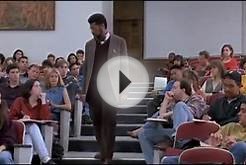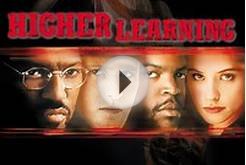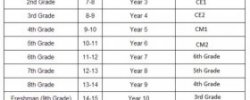HLC's Board of Trustees consider clarifying modifications to the Criteria, including the Assumed Practices, annually, usually with first reading in February and second reading in June.
The Core Components
The institution meets the Core Component if the Core Component:
- is met without concerns, that is the institution meets or exceeds the expectations embodied in the Component; or
- is met with concerns, that is the institution demonstrates the characteristics expected by the Component, but performance in relation to some aspect of the Component must be improved.
The institution does not meet the Core Component if the institution fails to meet the Component in its entirety or is so deficient in one or more aspects of the Component that the Component is judged not to be met.
The Criteria for Accreditation
The institution meets the Criterion if the Criterion:
- is met without concerns, that is the institution meets or exceeds the expectations embodied in the Criterion; or
- is met with concerns, that is the institution demonstrates the characteristics expected by the Criterion, but performance in relation to some Core Components of the Criterion must be improved.
The institution does not meet the Criterion if the institution fails to meet the Criterion in its entirety or is so deficient in one or more Core Components of the Criterion that the Criterion is judged not to be met.
The institution meets the Criterion only if all Core Components are met. The institution must be judged to meet all five Criteria for Accreditation to merit accreditation.
HLC will grant or continue accreditation (with or without conditions or sanctions), deny accreditation, or withdraw accreditation based on the outcome of its review.
The Criteria for Accreditation are the standards of quality by which the Commission determines whether an institution merits accreditation or reaffirmation of accreditation. They are as follows:
Criterion One. Mission
The institution’s mission is clear and articulated publicly; it guides the institution’s operations.
Core Components
1.A. The institution’s mission is broadly understood within the institution and guides its operations.
1. The mission statement is developed through a process suited to the nature and culture of the institution and is adopted by the governing board.
2. The institution’s academic programs, student support services, and enrollment profile are consistent with its stated mission.
3. The institution’s planning and budgeting priorities align with and support the mission. (This sub-component may be addressed by reference to the response to Criterion 5.C.1.)
1.B. The mission is articulated publicly.
1. The institution clearly articulates its mission through one or more public documents, such as statements of purpose, vision, values, goals, plans, or institutional priorities.
2. The mission document or documents are current and explain the extent of the institution’s emphasis on the various aspects of its mission, such as instruction, scholarship, research, application of research, creative works, clinical service, public service, economic development, and religious or cultural purpose.
3. The mission document or documents identify the nature, scope, and intended constituents of the higher education programs and services the institution provides.
1.C. The institution understands the relationship between its mission and the diversity of society.
1. The institution addresses its role in a multicultural society.
2. The institution’s processes and activities reflect attention to human diversity as appropriate within its mission and for the constituencies it serves.
1. Actions and decisions reflect an understanding that in its educational role the institution serves the public, not solely the institution, and thus entails a public obligation.
2. The institution’s educational responsibilities take primacy over other purposes, such as generating financial returns for investors, contributing to a related or parent organization, or supporting external interests.
3. The institution engages with its identified external constituencies and communities of interest and responds to their needs as its mission and capacity allow.
Criterion Two. Integrity: Ethical and Responsible Conduct
The institution acts with integrity; its conduct is ethical and responsible.
2.A. The institution operates with integrity in its financial, academic, personnel, and auxiliary functions; it establishes and follows policies and processes for fair and ethical behavior on the part of its governing board, administration, faculty, and staff.
2.B. The institution presents itself clearly and completely to its students and to the public with regard to its programs, requirements, faculty and staff, costs to students, control, and accreditation relationships.
2.C. The governing board of the institution is sufficiently autonomous to make decisions in the best interest of the institution and to assure its integrity.
1. The governing board’s deliberations reflect priorities to preserve and enhance the institution.
2. The governing board reviews and considers the reasonable and relevant interests of the institution’s internal and external constituencies during its decision-making deliberations.
3. The governing board preserves its independence from undue influence on the part of donors, elected officials, ownership interests, or other external parties when such influence would not be in the best interest of the institution.
2.D. The institution is committed to freedom of expression and the pursuit of truth in teaching and learning.
2. Students are offered guidance in the ethical use of information resources.
3. The institution has and enforces policies on academic honesty and integrity.
3.A. The institution’s degree programs are appropriate to higher education.
1. Courses and programs are current and require levels of performance by students appropriate to the degree or certificate awarded.
3. The institution’s program quality and learning goals are consistent across all modes of delivery and all locations (on the main campus, at additional locations, by distance delivery, as dual credit, through contractual or consortial arrangements, or any other modality).
3.B. The institution demonstrates that the exercise of intellectual inquiry and the acquisition, application, and integration of broad learning and skills are integral to its educational programs.
1. The general education program is appropriate to the mission, educational offerings, and degree levels of the institution.
2. The institution articulates the purposes, content, and intended learning outcomes of its undergraduate general education requirements. The program of general education is grounded in a philosophy or framework developed by the institution or adopted from an established...











